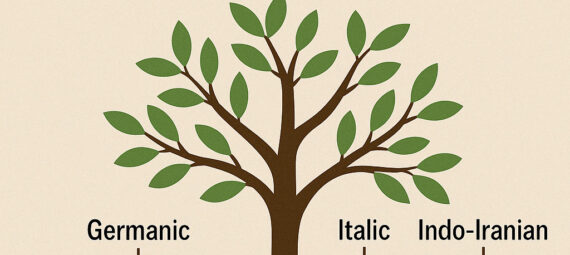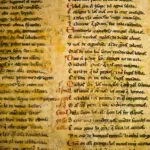As a historical linguist, I’m often asked how we can possibly know what a language sounded like before it was ever written down. And the honest answer is, we can’t know with exactness. We’ll never hear a Proto-Indo-European speaker talk or know for sure how a word was pronounced in 3000 BCE. But what we can do is track how sounds, specifically phonemes, shift over time in regular, predictable ways. These sound changes allow us to build strong, evidence-based hypotheses about how languages developed and how their ancestors might have sounded. And central to this entire process is the concept of sound classes.
Sound classes are the backbone of historical linguistics. Without them, our ability to reconstruct proto-languages, map sound changes, or even understand how modern languages relate to one another would be limited, if not impossible. This post is a deep dive into what sound classes are, how they behave, and why understanding them is central to the historical linguist’s toolkit.
In phonetics and phonology, a sound class is a group of speech sounds, or phonemes, that share certain articulatory or acoustic properties. These shared properties mean that, across languages and over time, sounds within the same class often behave similarly.
Here are some of the major sound classes that historical linguists rely on:
- Stops (plosives): Complete closure in the vocal tract followed by release (e.g., /p/, /b/, /t/, /d/, /k/, /g/)
- Fricatives: Narrowing of the vocal tract creating turbulence (e.g., /f/, /v/, /s/, /z/, /ʃ/)
- Nasals: Airflow through the nose (e.g., /m/, /n/, /ŋ/)
- Liquids: Relatively open vocal tract but more constriction than vowels (e.g., /l/, /r/)
- Glides (semi-vowels): Similar to vowels but functioning as consonants (e.g., /w/, /j/)
- Vowels: Open vocal tract sounds, varying by height, backness, and rounding
These aren’t arbitrary groupings, they reflect how the human vocal apparatus works. More importantly, these classes tend to pattern together in language change. That’s the key insight.
Languages change, but they don’t change randomly. When sounds shift over time, they usually do so systematically, and often within or between specific sound classes.
Take the classic example from the Germanic branch of Indo-European: Grimm’s Law. This sound change affected stops in a highly regular way:
- Voiceless stops → voiceless fricatives (e.g., Latin p → English f: pater → father)
- Voiced stops → voiceless stops (e.g., Latin d → English t: duo → two)
- Voiced aspirated stops → voiced stops (e.g., Sanskrit bh → English b: bhrātar → brother)
This isn’t a random mess, it’s a shift across sound classes. Voiceless stops became fricatives, a move that reflects a common lenition (weakening) process.
Why do these regularities matter? Because they let us reconstruct. If you know that a p sound in Latin regularly corresponds to an f in English, you can begin to “connect the dots” between related languages and work backward toward a shared ancestor.
The ultimate goal of much of historical linguistics is reconstruction, figuring out what an earlier, often unattested, language (called a proto-language) may have looked and sounded like.
Here’s how sound classes help us get there:
- Identifying Cognates: We start with words in related languages that seem to be historical siblings, cognates. These often look or sound similar, and they share meaning.
For example:- Latin: pēs
- French: pied
- Spanish: pie
- English: foot
- Mapping Sound Correspondences: We look at which sounds in each word correspond across languages. In the example above, we notice Latin p aligns with English f. These correspondences are usually class-based (e.g., stop → fricative).
- Inferring Historical Changes: Knowing how sounds tend to behave over time, how a stop might become a fricative, or a voiceless sound might become voiced in certain environments, we can begin to reconstruct likely earlier forms.
- Proposing a Proto-Form: Based on patterns across many words, we can posit a likely original sound. If all Germanic languages have f, and other Indo-European languages have p, we might reconstruct *p as the original proto-sound (Proto-Indo-European).
Sound classes give us the framework for making these judgments. They help us understand not just that a p became an f, but that this change is part of a larger, class-wide pattern of lenition.
Understanding which classes are prone to change and how they change over time is fundamental. Some of the most common processes include:
- Lenition: “Weakening” of sounds, often turning stops into fricatives or even glides (e.g., /d/ → /ð/ or /g/ → /w/)
- Fortition: The opposite of lenition, sounds become “stronger” (e.g., /v/ → /b/)
- Assimilation: One sound becomes more like a neighboring sound, often affecting nasals and liquids (e.g., /n/ → /m/ before /p/ or /b/)
- Dissimilation: Sounds become less similar to improve clarity
- Voicing/Devoicing: Shifts between voiced and voiceless sounds, especially within stop and fricative classes
These changes aren’t random, they’re constrained by articulatory ease, perceptual clarity, and broader patterns of speech. And because we know how these shifts tend to occur, we can trace them through time with surprising accuracy.
Another crucial dimension is chronology. Knowing when specific sound changes happened helps us narrow down possible reconstructions. For example:
- Grimm’s Law occurred early in the Germanic branch, so any word showing its effects must post-date that change.
- The High German Consonant Shift (e.g., p → pf, t → ts) helps distinguish High German dialects (like Standard German) from Low German and English.
By placing sound shifts within known timeframes, we can sequence changes and better reconstruct earlier stages. This is especially important when trying to untangle overlapping sound changes.
One might think this method works only within Indo-European, but sound class-based reconstruction is universal. It’s been applied to Uralic, Afro-Asiatic, Austronesian, and many other families. Wherever regular sound correspondences exist, and they almost always do, sound classes help make sense of them.
Even when working with modern dialects or creoles, sound classes allow us to trace how a language has changed in just a few generations. For example, in many varieties of English, /t/ becomes a glottal stop [ʔ] (as in “butter” → [bʌʔə]). This is a classic example of lenition within the stop class.
If you take away one idea from this post, let it be this: sound classes aren’t just theoretical constructs, they’re predictive tools. They help us make sense of what seems chaotic. They let us connect related words across languages and time. And they ground our reconstructions in phonetic reality.





